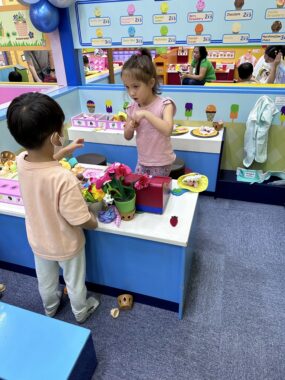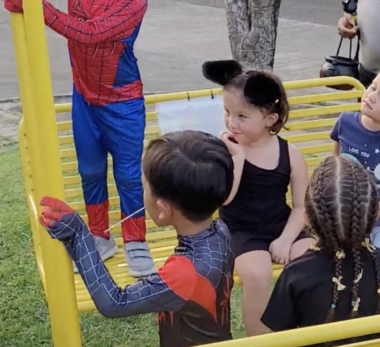Providing opportunities for our daughter to play with other children
Engaging with peers helps our AADC-deficient daughter build necessary skills

Life as a rare disease family can feel isolating at times. Not many people can relate to our challenges or accommodate our unusual needs. However, isolation can limit powerful opportunities for a child’s learning and development.
My wife, Judy, and I were an outgoing and adventurous couple who enjoyed good times with others. We wanted the same for our daughter, Rylae-Ann. Discovering that she had a rare neurotransmitter disorder known as aromatic l-amino acid decarboxylase (AADC) deficiency put those plans on hold. As any parent with a sick child would do, we dedicated all of our time and resources to caring for her.
Judy and I were still reluctant to engage with others or venture into public spaces, as we were still adapting to our new life. Another reason was that we mistakenly believed the rewards didn’t justify the work required to execute an outing.
As educators, Judy and I knew the importance of play and socializing for a child’s development. Yet we neglected this fact in favor of ease. We later noticed some consequences that resulted from this decision — namely, behavioral problems and sensory processing issues.
Social skills
Children learning to play together is an essential part of childhood. Children learn how to interact with others, solve problems, and develop social skills through play dates. They learn to communicate, take turns, share, and cooperate.
Spending time with peers can also help children learn how to deal with stress and frustration, and they eventually learn to negotiate and resolve conflicts. In my opinion, one of the most significant benefits is the development of their imagination and creativity. All these skills help children be successful in school.
Playing with everyone

Rylae-Ann plays with a younger boy she met at a play center. (Photo by Richard E. Poulin III)
For our daughter and other children with rare diseases, milestones and activities will look different, and that’s fine. In the beginning, we had Rylae-Ann only play with other children whom we met during hospital visits and in rare disease groups.
These play-date meetups also gave us time to vent, share, and learn from other parents who could relate to our child. But this segregated form of socializing shouldn’t be the only type of play. Later, we ventured into public play spaces with other families of neurotypical children, people we felt safe opening up to.
Inclusion benefits all
Exposing your child to other children will provide opportunities for them to see positive examples and receive support. It also provides your child with the best learning environment for academic success. As we created more inclusive playing opportunities, our daughter wasn’t the only one who benefited. Studies have shown that inclusion supports typical children as well.
Some parents of rare disease children may worry about their child being teased or bullied for being different. That’s a reality, but we cannot run away from it. Every time it happens to our daughter, we still feel our blood boil, but then we approach it as a learning opportunity.

Rylae-Ann plays at the playground with other kids from the neighborhood on Halloween 2023. (Photo by Richard E. Poulin III)
If we don’t allow other children to interact with those who are different, they’ll never have the chance to learn how amazing our diverse community is. The process of teaching your child to play with others can be gradual.
For our family, it began by inviting other children to play in tandem. Rylae-Ann and the other child would play separately but near each other. Slowly, we’d initiate interactions. From there, we’d gradually fade away, stepping back in as needed.
Holidays and breaks
With each holiday and weekend, we try to incorporate more socializing. In addition to giving our daughter the exposure she needs, it helps us maintain a happy and healthy lifestyle with friends as parents.
Teaching your child how to play with others is essential for their development. In addition to using the holiday season to give thanks for our blessings, it was also the perfect time to bring family and friends together for plenty of play and laughter.
Note: AADC News is strictly a news and information website about the disease. It does not provide medical advice, diagnosis, or treatment. This content is not intended to be a substitute for professional medical advice, diagnosis, or treatment. Always seek the advice of your physician or other qualified health provider with any questions you may have regarding a medical condition. Never disregard professional medical advice or delay in seeking it because of something you have read on this website. The opinions expressed in this column are not those of AADC News or its parent company, Bionews, and are intended to spark discussion about issues pertaining to aromatic l-amino acid decarboxylase deficiency.







Comments